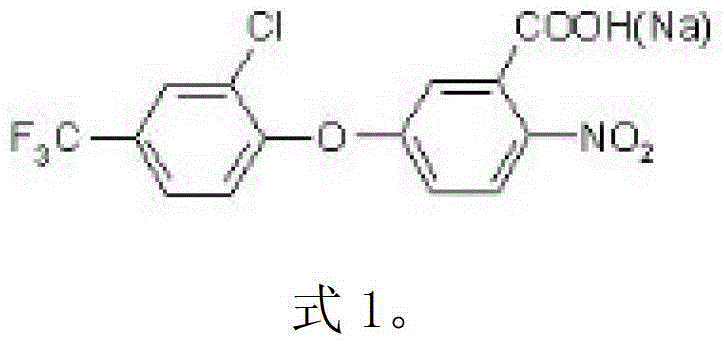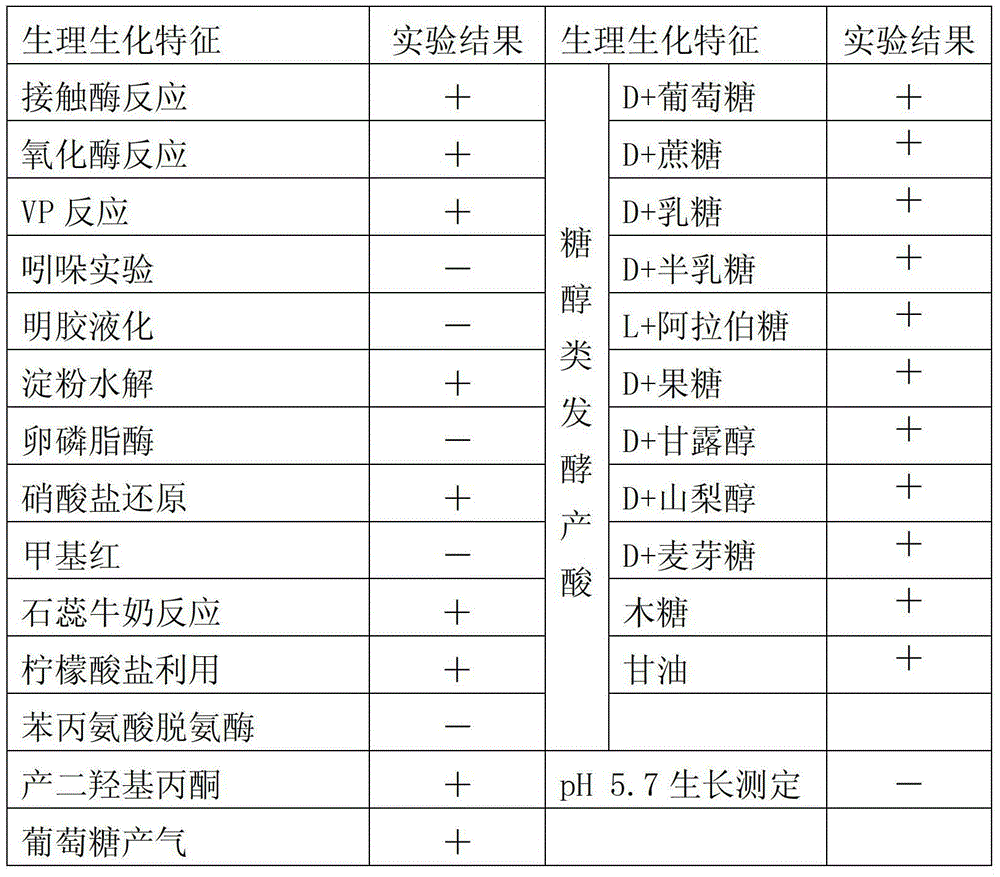Bacterium for degrading herbicide acifluorfen-sodium and application of bacterium
A technology of weed incineration and fungicide, applied in the field of bacteria for degrading herbicide weed incineration, can solve the problems of slow natural degradation, toxicity, short half-life, etc.
- Summary
- Abstract
- Description
- Claims
- Application Information
AI Technical Summary
Problems solved by technology
Method used
Image
Examples
Embodiment 1
[0037] Example 1, Isolation and Identification of Enterobacter sp. ZCF1643CGMCC No.7774
[0038] 1. Isolation of weed incinerator degrading bacteria ZCF1643
[0039] Add 10 g of soil samples (collected from farmland polluted by herbicide weed incineration in Shaanxi Province, China) to 100 mL of enrichment medium containing 200 mg / L of weed incineration, and culture at 28°C and 200 r / min for 7 days to enrich in weed incineration. degrading bacteria. After the first round of enrichment, 10ml of the enrichment solution was transferred to 100ml of the enrichment medium containing 400mg / L of weed fungus, and the culture was continued for 7 days for the second round of enrichment. Such continuous enrichment and culture for 5 times, the weed concentration was 200, 400, 600, 800 and 1000 mg / L in turn. After the enrichment is completed, the enrichment solution is evenly spread on the inorganic salt medium containing 1000 mg / L of weeds, and cultured at a constant temperature of 28°C ...
Embodiment 2
[0061] Example 2, Quantitative Determination of Enterobacter sp. ZCF1643CGMCC No.7774 Degradation Weed Burning Ability
[0062] 1. Preparation of standard curve for weed burning determination
[0063] Accurately weigh 10.0 mg of the weed incineration standard (purchased from Fluka) into a 10 mL volumetric flask, dissolve it with a small amount of methanol, place the volumetric flask in an ultrasonic bath and vibrate for 10 min, then dilute to 10 mL with methanol, shake well, and prepare Become 1000mg / L weed burning mother liquor. Prepare 10, 20, 40, 60, 80mg / L series of standard solutions. High performance liquid chromatography (HPLC) was used to measure the peak areas of different concentrations of weed incineration standard samples, with 3 repetitions. With the weed incineration concentration as the abscissa and the peak area as the ordinate, draw the weed incineration standard curve.
[0064] The detection conditions are as follows:
[0065] Detection system: Agilent110...
PUM
 Login to View More
Login to View More Abstract
Description
Claims
Application Information
 Login to View More
Login to View More - R&D
- Intellectual Property
- Life Sciences
- Materials
- Tech Scout
- Unparalleled Data Quality
- Higher Quality Content
- 60% Fewer Hallucinations
Browse by: Latest US Patents, China's latest patents, Technical Efficacy Thesaurus, Application Domain, Technology Topic, Popular Technical Reports.
© 2025 PatSnap. All rights reserved.Legal|Privacy policy|Modern Slavery Act Transparency Statement|Sitemap|About US| Contact US: help@patsnap.com



